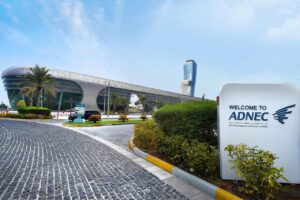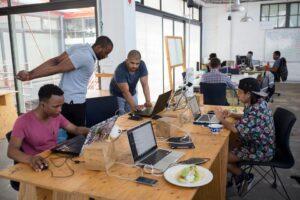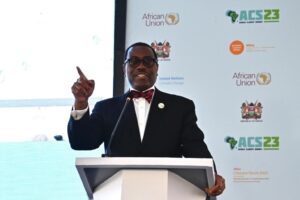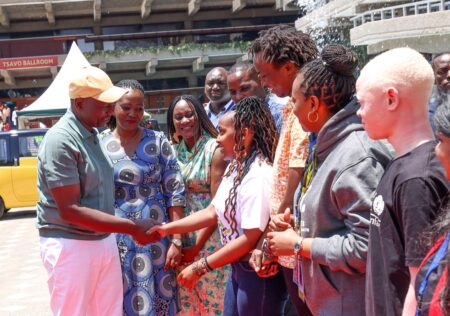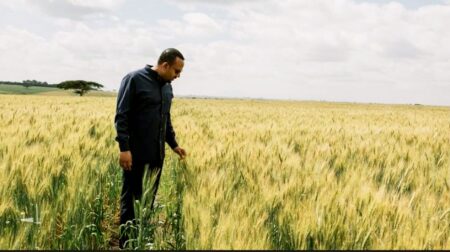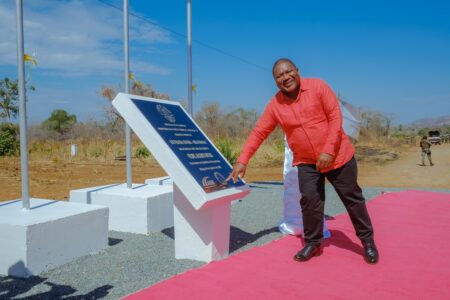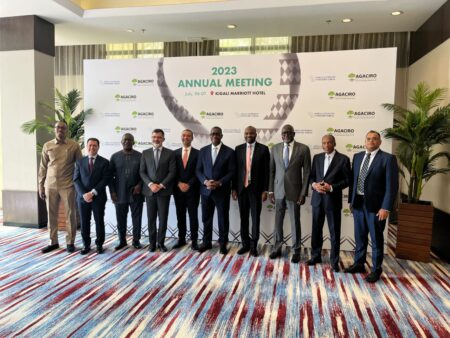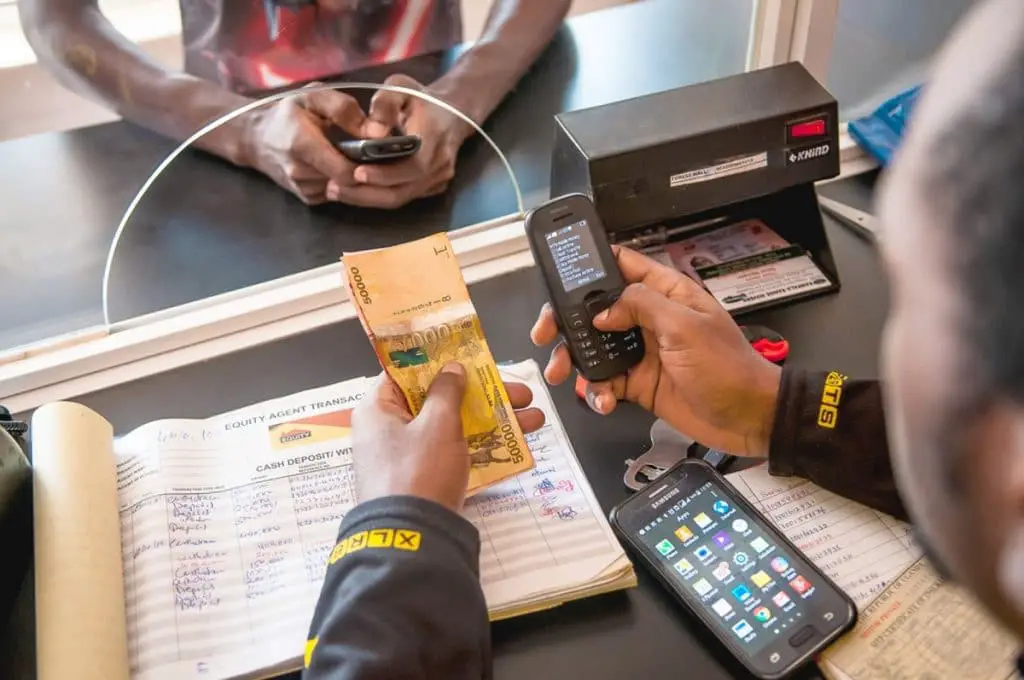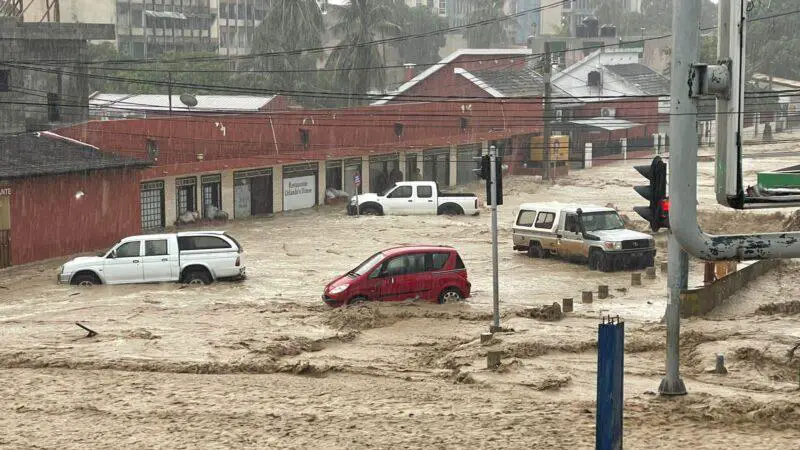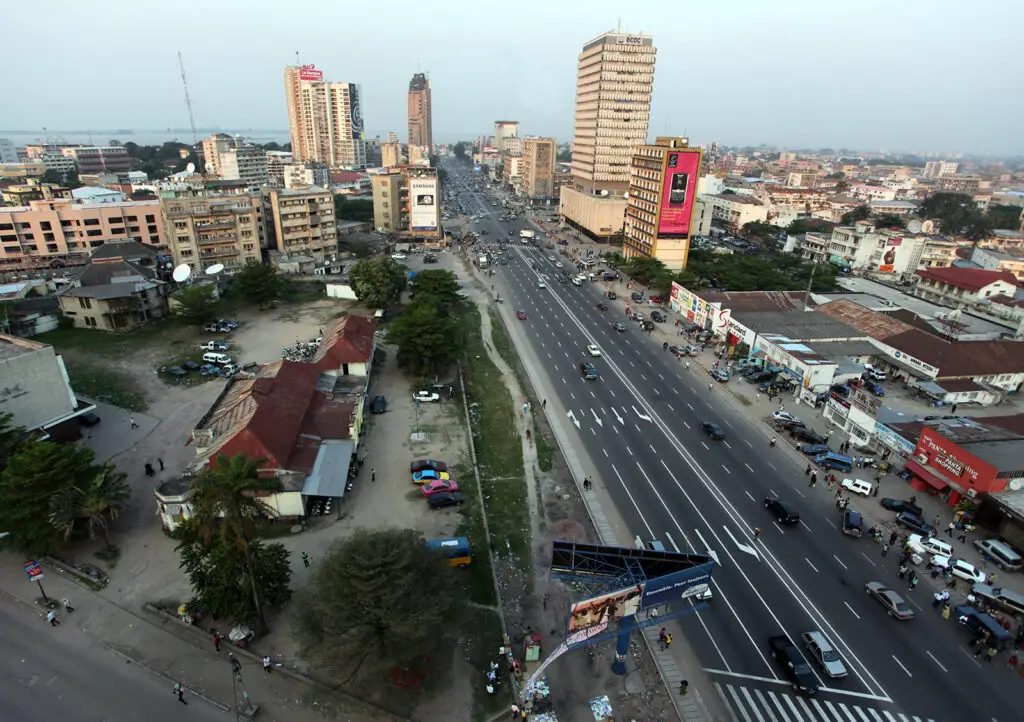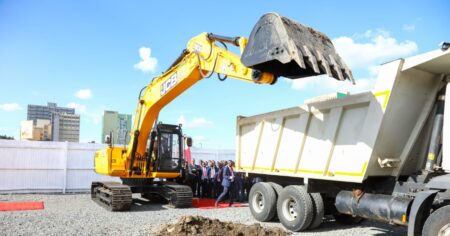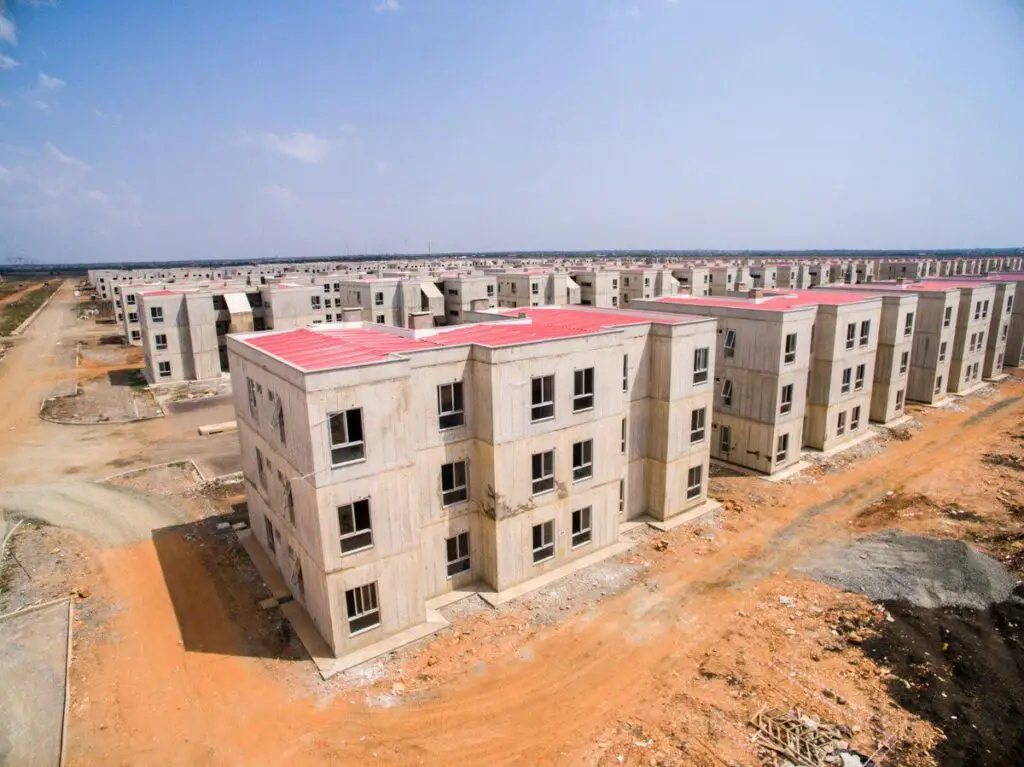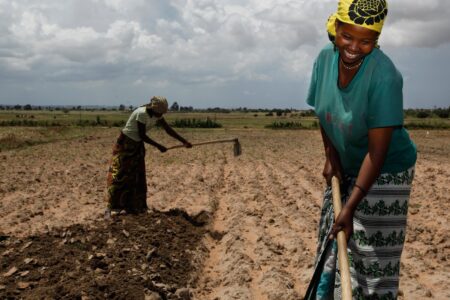- Abu Dhabi radiates optimism as over 300 startups join AIM Congress 2024
- TLcom Capital Raises $154 million in Funding to Boost Its African Growth
- Africa’s $824Bn debt, resource-backed opaque loans slowing growth — AfDB
- LB Investment brings $1.2 trillion portfolio display to AIM Congress spotlight
- AmCham Summit kicks off, setting course for robust future of US-East Africa trade ties
- Why the UN is raising the red flag on the UK-Rwanda asylum treaty
- Portugal’s Galp Energia projects 10 billion barrels in Namibia’s new oil find
- Wärtsilä Energy offers tips on how Africa can navigate energy transition and grid reliability
Browsing: African Development Bank
- Youth leaders, entrepreneurs and policymakers presented the Africa Youth Climate Assembly Declaration to Kenya’s President William Ruto, and African Development Bank Group President Akinwumi Adesina.
- The declaration advocates for the accelerated establishment of a Global Green Bank and a New Global Financial Pact, aiming to prioritise young people and their interests in climate financing.
- During the Africa Youth Climate Assembly, a wide range of issues emerged including youth access to finance, Africa’s energy transition, the plight of millions displaced owing to the impacts of climate change and mobilisation of resources for sustainable development.
As the Africa Climate Summit draws to a close, a key highlight from the three-day summit is that Africa’s youth need to be more involved in the climate change conversation.
This, as youth leaders, entrepreneurs and policymakers presented the Africa Youth Climate Assembly Declaration to Kenya’s President, William Ruto, and African Development Bank Group President Akinwumi Adesina.…
- Fresh financing will bolster Ethiopia’s progress in achieving wheat self-sufficiency.
- Data shows Ethiopia’s wheat productivity has struggled to match the demands of a rising population, urbanization, and economic expansion over the past decade.
- Statistics show that Ethiopia’s annual wheat imports average roughly $600 million.
Ethiopia, the second-largest wheat producer in sub-Saharan Africa, has received a significant boost from the African Development Bank (AfDB) in the form of an $84.3 million grant aimed at propelling the nation’s wheat production to new heights.
The grant, a collaborative effort between the AfDB, the Government of the Netherlands, agribusiness firm OCP Africa, and the Global Center on Adaptation, holds the promise of not only enhancing wheat production but also bolstering exports.
CREW initiative in Ethiopia’s wheat production
As wheat gains prominence as a major crop cultivated across the vast expanse of African plains, Ethiopia strategically positions itself as a pivotal player in the sub-sector.…
- The Negomano-Roma Road was financed by the African Development Bank.
- President Nyusi finds the road reminiscent of the two nations’ Pan-Africanism aspirations.
- Road will facilitate residents with transportation services for health, education and local economic needs.
Mozambique President Filipe Nyusi has commissioned a critical cross-border link road, Negomano-Roma connection that was financed by the African Development Bank.
The road, which stands to be a key link for intensifying regional integration with Tanzania, stretches from the nation’s northern province. At the moment, the road is facilitating residents with decent transportation services for health, education and local economic needs.
Mozambique-Tanzania Pan-Africanism aspirations
Constructed under 42 months, and with the inclusion of 417 local workers under the framework of promotion and inclusion of local content, President Nyusi finds the road reminiscent of the two nations’ Pan-Africanism aspirations.
“The road is a great gain for the viability and maximization of regional integration. It is …
- AfDB is eyeing $2.3 trillion in sovereign wealth funds, strategic investment funds, pensions, and life insurance assets.
- The AfDB wants to unlock the potential of various wealth funds in Africa.
- Lender is now seeking set up of the African Sovereign Wealth Funds secretariat.
The African Development Bank (AfDB) is calling for unity to drive investments by mobilizing capital in Africa currently held in various funds and estimated at estimated at $2.3 trillion. This massive capital in Africa is in sovereign wealth funds, strategic investment funds, pensions, and life insurance assets.
Speaking at the Second Annual Meeting of the Africa Sovereign Investors Forum (ASIF), AFDB Vice President for Private Sector, Infrastructure, and Industrialisation Solomon Quaynor said the Bank is committed to supporting the establishment and operations of the African Sovereign Wealth Funds secretariat.
ASIF was launched in June 2022 by a group of 10 African sovereign wealth funds with a goal …
- In 2021, 76 percent of adults had an account at a bank or regulated institution
- Financing will enable African nations to expand portfolio of digital financial solutions and initiatives
- The facility will be housed and managed by the African Development Bank,
India will contribute $2 million to the Africa Digital Financial Inclusion Facility (ADFI), in an effort to break the barrier to growth and spur uptake of digital financial solutions.
The facility will be housed and managed by the African Development Bank. It will mainly focus on accelerating financial inclusion in Africa, India said.
India is recognised globally for the success of its digital public payments system. The country’s collaboration with ADFI enables the facility to learn from best practices and help scale up initiative. The program aims to meet the needs of financially excluded and underserved people in Africa.
Africa yet to fully benefit from inclusion
Despite the growing …
- Civil unrest, electricity crisis and natural disasters in South Africa deal a body blow to the regional economy growth prospects.
- The 2023 Southern Africa Economic Outlook indicates that the Southern Africa region’s GDP growth barely reached 2.7 percent. This level is much lower than global and African averages of 3.4 percent and 3.8 percent respectively.
- According to the African Development Bank, Southern Africa region is now lagging behind its peers across the continent.
The Southern Africa zone has continued to experience a slowdown in economic growth in the past year largely driven by increasing challenges in regional powerhouse South Africa.
The south-most country on the continent has seen civil unrest, electricity crisis and natural disasters worsen the region’s economic slowdown. Neighbouring Zimbabwe, Zambia, Malawi, Madagascar, and São Tomé and Príncipe, have also experienced intense adverse weather events.
According to a report by the African Development Bank, climate change-related crisis has …
- DRC’s economy is rising with real GDP growth at 8.9 percent in 2022 and projected to 6.8 percent in 2023.
- Macroeconomic imbalances have, however, emerged piling inflationary pressures.
- The roiling conflict in the East and upcoming elections complicate macroeconomic management.
The International Monetary Fund (IMF) has outlined a number of tough measures for war-tone DRC as it seeks $200 million financing. The funds are part of the country’s Special Drawing Rights (SDR), the supplementary forex reserves maintained by the IMF. They are units of account for the IMF, and not a currency per se. What’s more, they represent a claim to currency held by IMF member countries and DR Congo can access about $200 million.
An IMF team led by Mercedes Vera Martin met with the authorities in Kinshasa between April 19–May 3. This was on the fourth review of the three-year arrangement under DRC’s Extended Credit Facility (ECF).
Macroeconomic
…- Project Management Institute’s recent Talent Gap report shows 2.3 million people will be needed each year to fill all project management-oriented (PMO) positions that are expected to open by 2030.
- To remain competitive, companies will need to hire problem solvers and relationship builders who can help drive change and deliver strategic value.
- During this decade, sub-Saharan Africa will witness a 40 percent growth in PMO employment opportunities.
African economies could be headed to a severe shortage of skilled project managers to implement critical infrastructure investments across the continent.
According to Project Management Institute’s most recent Talent Gap report, 2.3 million people will be needed each year to fill all project management-oriented (PMO) positions expected to open by 2030.
To remain competitive, companies will need to hire problem solvers and relationship builders who can help drive change and deliver strategic value.
During this decade, sub-Saharan Africa will witness a 40 percent …
- The World Bank data shows remittances by Africans in the diaspora hit over $95.6 billion in 2021 with Nigeria, Ghana, and Kenya among the highest recipients of the inflows.
- Africa has a housing deficit of about 56 million units driven largely by urbanization and population growth, which has left governments struggling to meet the demand for affordable units.
- Many of the 40,000 people moving to African cities every day cannot afford basic formal housing or access loans to acquire homes.
Pan African housing development financier, Shelter Afrique, is targeting Africans living and working abroad to enhance the delivery of affordable housing agenda across the continent.
Shelter Afrique managing director Thierno-Habib Hann said over 170 million people of African descent that live and work in various countries across the world present a formidable resource pool for the continent’s infrastructure development, including housing.
“African diaspora populations are growing, as are their savings …
- The continent spends over USD60 billion yearly on food imports that it could generate domestically.
- African countries have allocated large sums to agriculture, but according to experts, this is insufficient.
- As a result, countries are experiencing deficits even as governments continue to spend billions of dollars bolstering their military defenses, which fuels conflict, displacement, and hunger.
It was previously recorded that Africa’s agricultural area has expanded by more than a third during thepast two decades (2000-2019), accounting for 52 percent of the global increase, or 102 million hectares.
The continent is said to contain around one-fourth of the world’s agricultural land but millions of people continue to face malnutrition as dry and semi-arid regions are devastated by drought.
